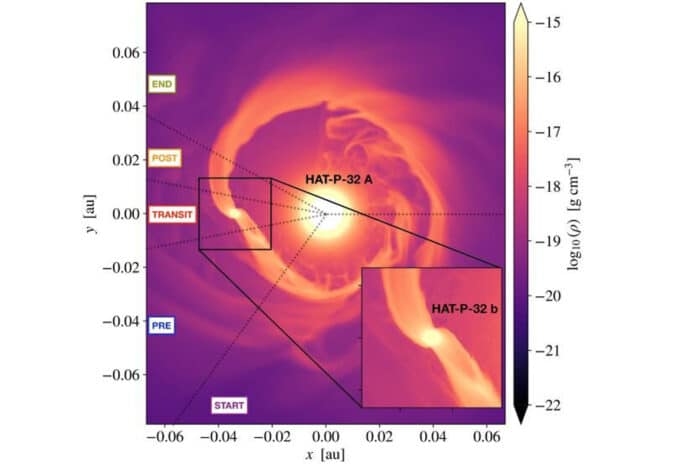Using observations from Hobby-Eberly Telescope (HET), astronomers at the University of Texas at Austin’s McDonald Observatory have discovered some of the longest tails of Helium escaping a Jupiter-like planet called HAT-P-32b. According to astronomers, the planet- which is 2x the size of Jupiter– is losing its atmosphere through these jets.
These tails are more than 50 times the length of the planet’s radius. Tails of escaping material around planets are probably the result of a collision freeing a trail of dust and debris. Or, they can be caused by the heat of a nearby star energizing and blowing a planet’s atmosphere into space. However, tails as long as HAT-P-32b’s are truly remarkable.
The tails of HAT-P-32b had been found in earlier investigations. However, the tails’ actual sizes could have been clearer because astronomers had only tracked the planet as it moved in front of its star. The team observed this with long-timeframe observations, thanks to the Hobby-Eberly Telescope. The team observed the planet in its full orbit.
The atmosphere of HAT-P-32b’s parent star is probably what boils off, creating the planet’s tails. The planet is what astronomers call a “hot Jupiter,” which means it is large, gaseous, hot, and orbits its star closely. Due to its close orbit, HAT-P-32b’s atmosphere is expanding due to heat from its parent star. As a result of the atmosphere’s rapid expansion, part of it managed to escape the planet’s gravitational pull and was pulled into an orbit around a neighboring star.
Caroline Morley, assistant professor at The University of Texas at Austin and principal investigator for the HET Exospheres Project, said, “Our findings on HAT-P-32b may help us understand how other planets and their stars interact. We are able to take high-precision measurements on hot Jupiters, like this one, and then apply our findings to a wider range of planets.”
Journal Reference:
- Zhoujian Zhang, Caroline Morley, Michael Gully-Santiago et al. Giant tidal tails of helium escaping the hot Jupiter HAT-P-32 b. Science Advances. DOI: 10.1126/sciadv.adf8736
